Jeg vil gerne sige et par ord om Maidans spontanitet. Og ikke engang om Pyatt eller Nuland med småkager og beskidte amerikanske penge, som blev taget fra ambassaden til Maidans hovedkvarter i poser. Jeg vil undersøge historien i forbindelse med de offentliggjorte CIA-dokumenter om den 'nationale befrielses'-bevægelse i Ukraine. Det er et interessant faktum, at CIA sponsorerede Banderist-bevægelsen, samtidig med at den betragtede den som terroristisk. Dette er dog ikke noget usædvanligt. De er involveret i dette den dag i dag, men nu er der i stedet for banderister alle mulige jihadister. Også kortet over spredningen af banderistiske følelser i Ukraine er angiveligt fra 1957. Det ses, at banderisme påvirkede mindre end en fjerdedel af Ukraines territorium i Vesten. Og der er også en beskrivelse af stemningerne. Krim blev endda aldrig betragtet som ukrainsk, og om Donbass sagde de, at det 'føler sig selv som russere ø blandt ukrainere.'* * * * *
Og sammenlign nu dette kort med i dag. Denne kræftsvulst, som på det tidspunkt ikke blev skåret ud, men blev gjort tilbageværende, har spredt sig over hele Ukraine. Børnebørnene til dem, der kæmpede mod nazisterne og kæmpede mod banderister, marcherer i dag under banderistiske flag og opfordrer i rent russisk sprog til at 'skære russere'. Og blandt disse marcherende er der en masse efterkommere af dem, som Banderisterne dræbte, parterede og brændte.
Alt dette var planlagt i årtier. Og det samme var planlagt og er ved at blive planlagt mod Rusland. Og der er mange af dem, der inde i Rusland aktivt arbejder for, at det samme helvede kommer til Moskva, Kazan, Skt. Petersborg og Khabarovsk.
Amerikanske analytikere hævdede i en hemmelig undersøgelse fra CIA's arkiver, at befolkningen i mange regioner i USSR ville have støttet en anti-sovjetisk operation.
Skrevet i august 1957 blev rapporten med titlen 'Modstandsfaktorer og specialstyrkers aktioner. Ukraine' for nylig afklassificeret og offentliggjort.
Kommentar: Delvist oversat af SOTT.net fra From the CIA Archives: The US was preparing an anti-Soviet operation in Ukraine back in 1957
The work on more than 200 pages was written by a group of researchers at Georgetown University by order of one of the divisions of the Ministry of Defence.
It is a complete analysis of the prospects of conducting an anti-Soviet armed struggle in the Ukrainian Soviet Socialist Republic by US special forces for a possible anti-Soviet uprising.
Analysts laid out on the shelves the mood of the population, linguistic characteristics, and possible ethnic tensions in various regions of the country.
The maps composed in the secret report in many ways are similar to the political and social distribution of forces in Ukraine, also half a century later.
And certain conclusions in the report miraculously coincide with the course of the so-called "Russian spring", particularly in respect to Donbass.
Secret report
The confidential report discussed in detail all possible factors that can affect the operation of US special units.
The details of the economic development, transportation, communications, topography and climate of the regions of the USSR.
It especially emphasizes the potential of assistance to American forces by the local population in the struggle against the Soviet regime.
Analysts have predicted it based on the nuances of the history of interethnic relations and anti-Soviet and anti-Russian activities in Ukraine.
The Americans divided Ukraine into 12 conditional sub-regions, from weak to strong anti-Soviet sentiment.
The secret report also identified a subregion to carry out a special anti-Soviet operations most effectively.
The help of Americans
American analysts noted the importance of Ukraine to the USSR not only because of its size, but also because of significant economic potential.
"Therefore, the ability for a national resistance in Ukraine may have more serious consequences for the USSR than in other parts of the country," thought the Americans in the 50's.The Americans argued that a considerable part of Ukrainians are very critically disposed towards the Soviet regime.
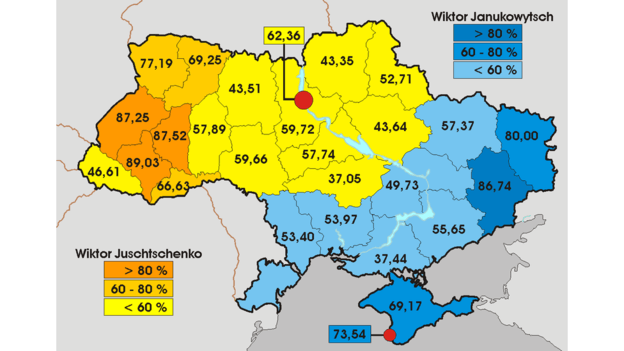
"Under favorable conditions, these people can help American special forces in the fight against the Soviet regime," it is stated in the report.The loyalty map of Ukraine
One of the most interesting parts of the report is the map of the loyalty of the Ukrainian population towards the Soviet regime.
It was created on the base of four main factors: ethnic composition of the regions, stance towards the Bolsheviks during 1917-1921, the attitude of the German occupation and the partisan movements, as well as the number of cases of armed resistance to Soviet power.
According to these criteria, Ukraine is divided into 12 regions - from the most loyal to those who perceive the Communists negatively.
Compiled by researchers, the loyalty map is like a similar map at the time of independence - from supporting the orange forces in the 2004 elections to the perception of separatist ideas in the spring of 2014.
Crimea and Donbass
The most loyal to the Soviet regime the Americans determined to be Crimea and the part of Donbass - the industrial regions of Lugansk and Donetsk regions.
Crimea is marked as "Zone I".
"In Crimea, the population have little sentiment against the regime and they are unlikely to help the special forces," said the analysts.At that time, in Crimea, according to intelligence data, lived 60% of Russians and 35% of Ukrainians.
American analysts pointed to the hostility towards the Communists of the Crimean Tatars deported from Crimea.
However, in the report they still hoped that in the remote mountainous areas of the Peninsula some groups of the Crimean Tatars could still remain.
"Those who could stay in the highlands will surely help the special forces," considered the analysts. It is also indicated to Special forces that, theoretically, the new immigrants from Western Ukraine could contribute to their activities.
The region that is most significantly loyal to the Soviet government, which the Americans assigned to the second zone, is the region of Donbass. They are very similar to the outlines of the modern self-proclaimed "DPR" and "LPR" - minus North of the Lugansk region and Mariupol.
These areas, which are now controlled by Ukraine, the Americans in the 50's assigned to the zone least loyal to the Soviet government.
In zone II, according to data of the United States, Ukrainians composed the minority of the population.
"The local population considers themselves as residents of a Russian island in the Ukrainian sea and identify themselves with the Soviet power," it is said in the report.Where minor support is possible
The entire border strip from Chernigov to the Lugansk region via Kharkov, Americans assigned to the third zone, where it was possible to expect certain assistance to the special forces.
Here the Ukrainian population sometimes dominates over Russian, but the Americans didn't record here any serious anti-Soviet sentiment.
Although, according to US intelligence, during the Second World War nationalist Ukrainian groups acted in the regions of Kharkov and Chernigov.
"In some rural areas, the special forces will not face resistance from Ukrainians, but the threat of reprisals from Russians will keep them from providing help," the report notes.The fourth zone Americans defined as the current Odessa oblast, where there is approximately the same ethnic composition and level of anti-Soviet sentiment.
In fact, after Crimea and Donbass, Americans called Odessa and Kharkov the next in regards to loyalty to the Soviet government, where in the spring of 2014 there was a powerful separatist movement. But they did not find serious support among the population.
The Americans assigned the predominantly agricultural areas of the Northern black sea to the qualitatively-different fifth zone - the wide coastal strip from Nikolaev to Mariupol.
Here, with a few exceptions, it was dominated by the Ukrainian population. During the Second world war Ukrainian educational and cultural life were active, which "did not take a strong political shape."
In addition, Americans noted that half a million Ukrainians from Western Ukraine with its "more Pro-Ukrainian sentiments" were transported to the Kherson and Nikolaev regions.
"During the Second world war, evidence was seen that a significant part of the locals considered themselves more as residents of the Ukrainian Republic than of the Union as a whole," the analysts noted.The report considered that the special forces of the United States will not receive significant resistance here, and will also have some support from the Ukrainian population.
The central Dnieper area in the quadrangle Krivoy Rog, Zaporozhye, Dnepropetrovsk and Pavlograd is described by analysts as a separate sixth zone with more favorable conditions.
"In this region special forces can receive the limited support of the population," the report says.Ukrainians here are by far in the majority, although intelligence reminds that in the industrial centers of the region there is considerable support for the Bolsheviks.
Anti-Soviet centre of Ukraine
The first conditional region where the US special forces can receive considerable support are the left bank of the Poltava, Chernigov, and Sumy regions, as well as the right bank of the Kirovograd region and parts of the Vinnytsia region.
"This belt is the traditional core of the land of Ukraine, and Ukrainians here constitute more than 95% of the population in many regions," it is said in the report.During both world wars there were significant pro-Ukrainian and nationalist sentiment.
The more anti-Soviet was called the conditional "zone eight", which included the Kiev, Cherkasy, Zhytomyr, and Khmelnytsk regions.
Nationalist and anti-Soviet sentiment here, according to the report, were strong, and the local population could provide "significant support to the special forces."
"The region is composed of the Ukrainian population, which has undergone a small Russian influence," thought the Americans.Here there was a powerful Ukrainian movement in 1917-1921, and during collectivization an armed resistance was recorded.
During the Second world war, in the region there was a powerful anti-Soviet sentiment, and in North Polesiye Ukrainian armed rebel groups operated.
The Soviet partisans were supposedly not supported here.
"It seems that in this region the special forces will receive at least moderate help," it is noted in the report.Western Ukraine
The Americans divided into another four zones the territories of Western Ukraine newly attached to the USSR.
Here, the Americans recorded a very powerful anti-Soviet sentiment and the prospect of support for US special forces.
In particular, the ninth zone - Volyn - the United States called one of the centers of Ukrainian rebels during the Second world war.
And four cities of the region - Kovel, Lutsk, Kostopol, and Vladimirets - according to intelligence reports were partially controlled by the Ukrainian rebels who successfully fought against the Germans and Soviet partisans.
There was an absolute advantage of the Ukrainian population with Polish inclusions.
At this time the Americans note that because of the hard stand-off between Ukrainians and Poles, the latter are unlikely to support a pro-Ukrainian uprising.
The US pointed out that until 1950 there was a very powerful armed resistance to the USSR, which was partly observed until 1956.
In the tenth zone - Transcarpathia, the Ukrainian population has no history of relations with the Russians and had conflicts with the Hungarians.
According to US data, in Transcarpathia after World War II, Ukrainian anti-Soviet units were acting North of Uzhgorod and in mountainous areas.
A similar situation is in the Chernovtsyi region - the eleventh zone.
Here the Ukrainian population dominates, which during the war provided some resistance to the Romanian administration, but the Ukrainian rebels were active in the mountainous areas.
Activities of underground groups in the mountainous areas, according to US data, lasted until 1956.
The Americans attributed the most anti-Soviet sentiment to three Galician regions: Lvov, Ternopil, and Ivano-Frankovsk.
The Americans noted the presence of its own army here during the First World War, the stand-off with Poles in 1920-1930's, and the powerful Ukrainian Insurgent Army (UPA), which fought with the Germans and the Communists until 1956.
At the time of reporting, the Americans did not rule out that in remote mountainous areas the remnants of a separate Ukrainian units can be met.
"Special forces can obtain significant support of the local population in this region, including active participation in actions against the Soviet regime," summed up the report.Favorable areas for special operations
Having analyzed all the factors - geography, and the possibilities for masking, the mood of the population, and clusters of strategic targets for sabotage, special forces were proposed five areas for effective attacks.
It's mainly the Northern and Western regions and also the southern coast of Crimea.
A significant part of Central Ukraine was recognized as unsuitable for efficient operations due to the agrarian character of the economy and a large territory where it is inefficient to act.
However, so that their products did not go to Russia, the special forces were recommended to block the path of the connection from here in favorable sectors.
The situation is similar with the Eastern Kharkov region, where only "separate operations" to block communications from Donbass to Russia were considered as possible.
The same also applies to the industrial region near Dnepropetrovsk.
The most important economic region - Donbass - is absolutely not suitable for special operations of forces because of the lack of places for masking, high population density, and "a large number of Russian and Russified Ukrainian population."
Where to strike
The Map of locations for effective operations is concentrated in the Western regions.
In each zone of action of the special forces details about the main objectives of the attack and the infrastructure on the lines of electrophoretic and railways were highlighted.
Special forces were recommended to first act where less resistance and problems with masking can be expected.
The Americans identified the Carpathian mountains and Northern foothills as a favorable region for operations.
In addition to favorable sentiments of the population, there are strategic reserves of potash and gas fields, which are important for the center of Ukraine and cities of central Russia.
Also, road connections with Eastern European allies of the USSR pass through here.
Conditions for masking - mountains and forests - are determined as very favorable here.
The region around the city is recognized as a separate zone for special operations.
Although it is more difficult with masking here, there are more important transport arteries from East to West in Germany.
For each zone analysts recommend different types of equipment, training, and tactics.
In addition to the specifics of the location of population and industry, in each zone they tried to sketch a map of the location of the security forces.
Special attention was given to the construction of a gas pipeline from Dashava in the Carpathians, which had to pass through Leningrad via Minsk, as was pointed out by the Americans.
For efficiency of operations Volyn took third place - here there are a few strategic objects, but other favorable factors, in particular, it's convenient to mask in the swamps and forests.
"The greatest value for the special forces is the railway line that connects the Union with Poland and Germany," it is said in the report.Kiev and Crimea
The Zhytomyr and Kiev regions were assigned to the fourth zone of special operations, where almost all factors are favorable, from population to industry.
On this background, the designation of the southern coast of Crimea as the fifth favourable zone seems strange.
Analysts pointed out that there are many important railways, ports, a naval base, and some raw materials.
The Americans believed that the Crimean mountains can provide shelter for special groups, but only if they have specific equipment and training.
Analysts also hoped for some support for the Crimean Tatars in the mountains, who could avoid deportation.
The study doesn't contain any proposals or information about when and under what circumstances the United States could start a special operation on the territory of the Ukrainian Soviet Socialist Republic.
Via BBC Ukraine
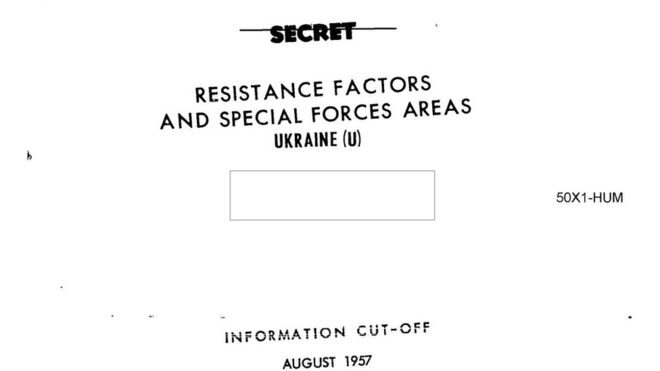
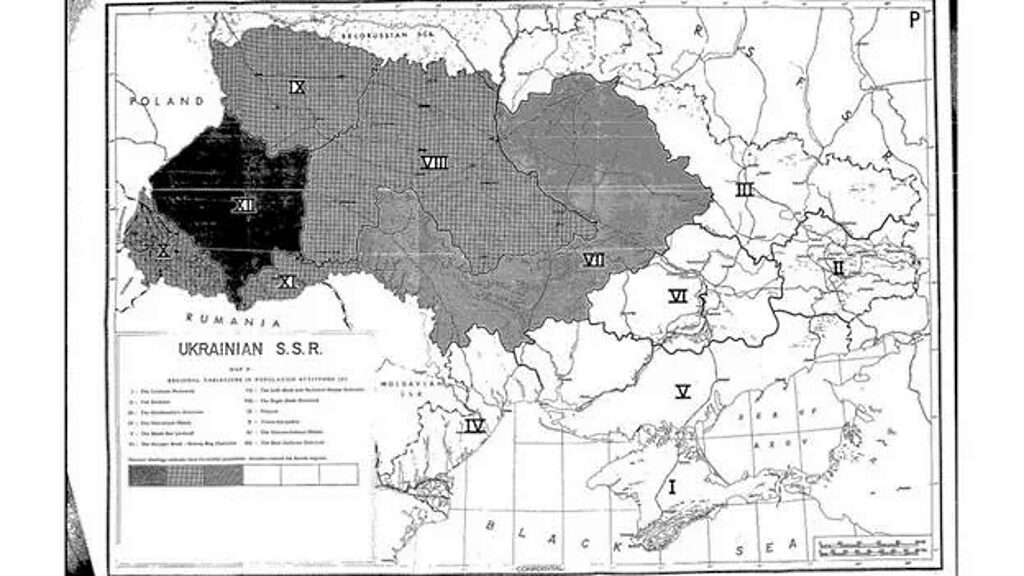
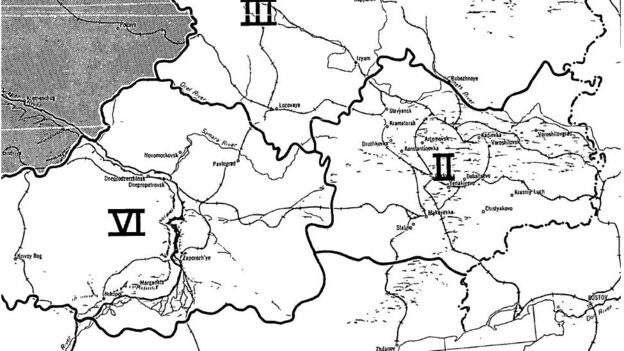
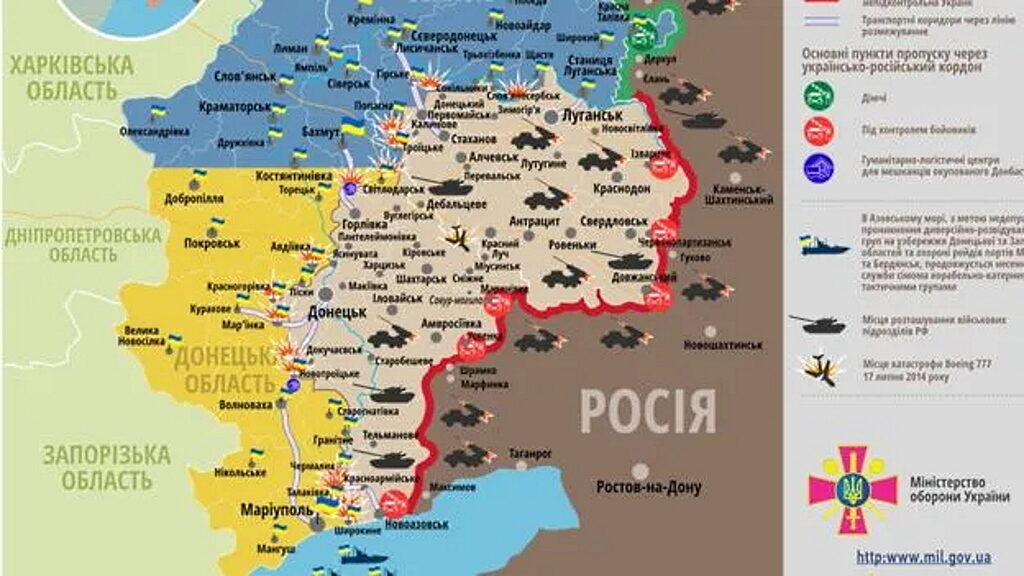
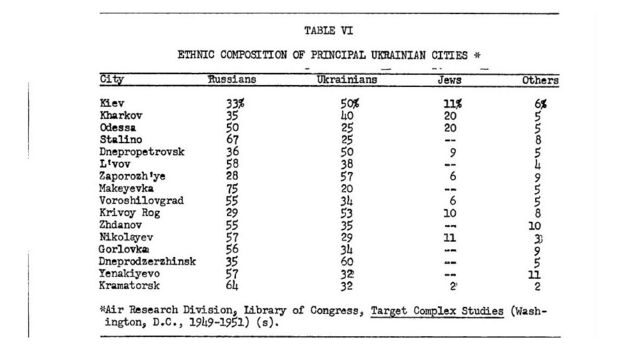
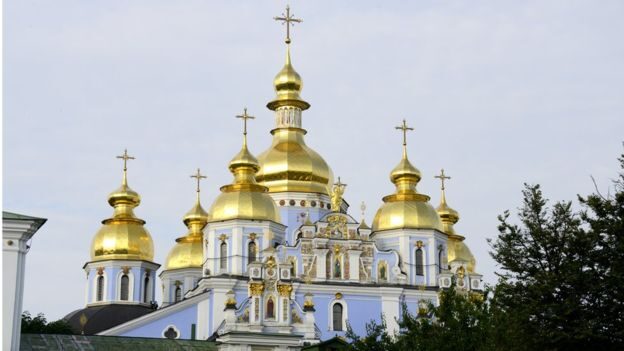

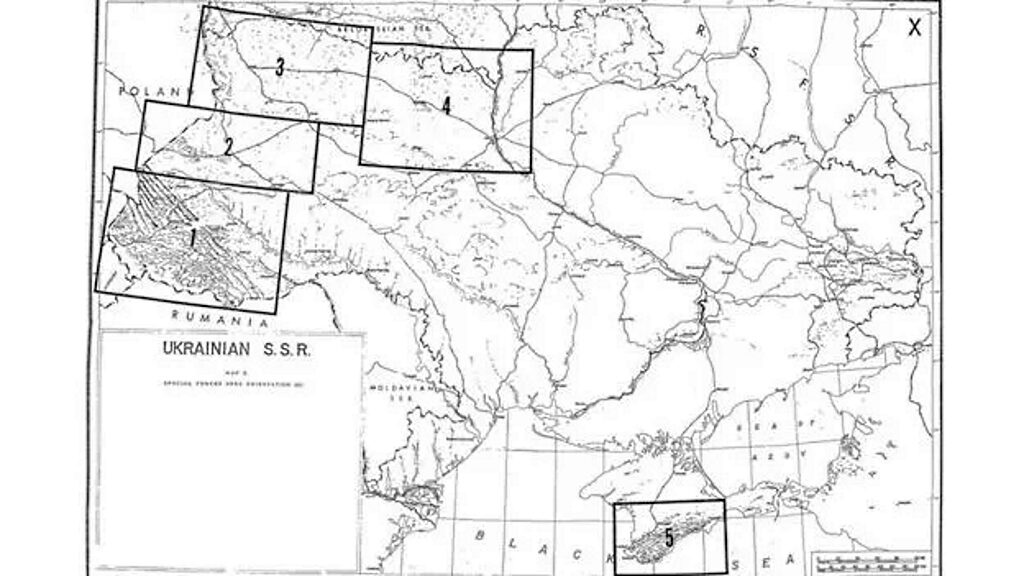
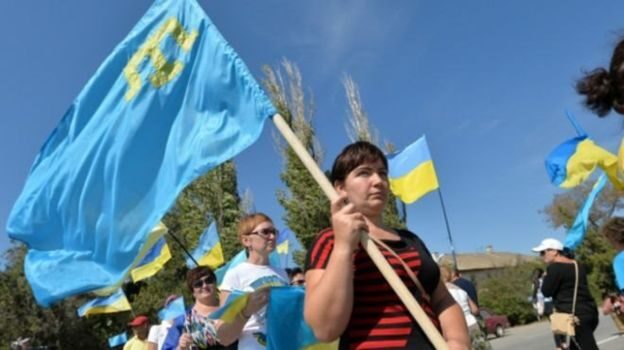

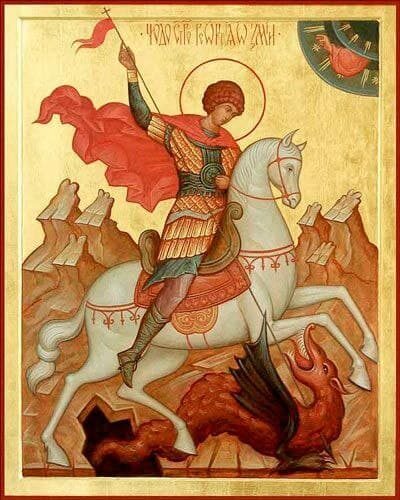

Læserkommentarer
dig vores Nyhedsbrev